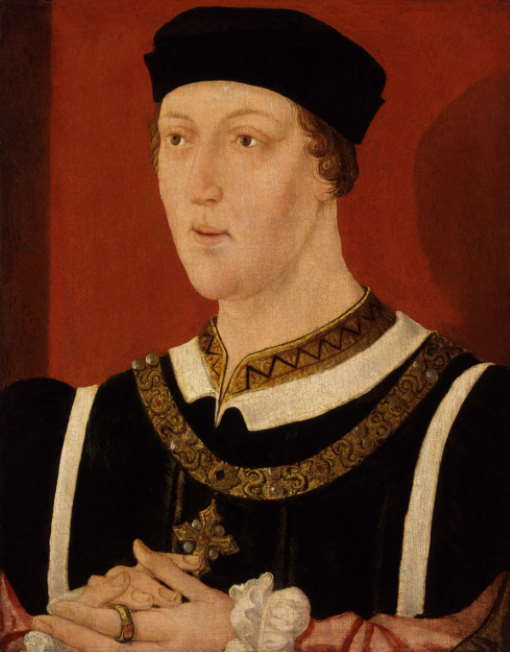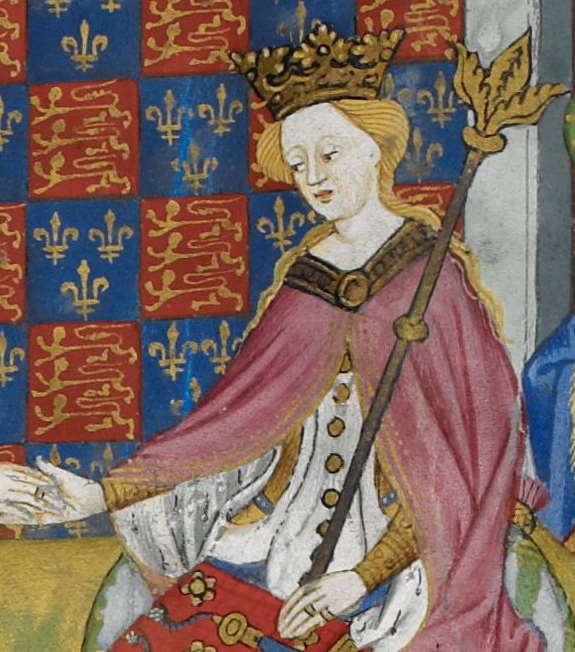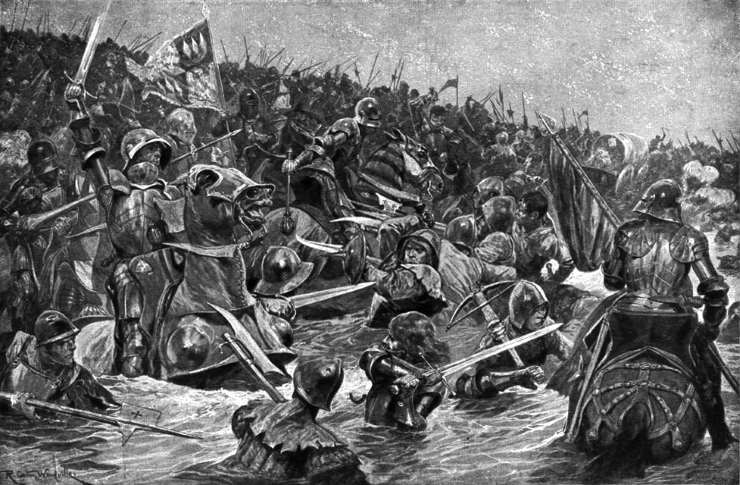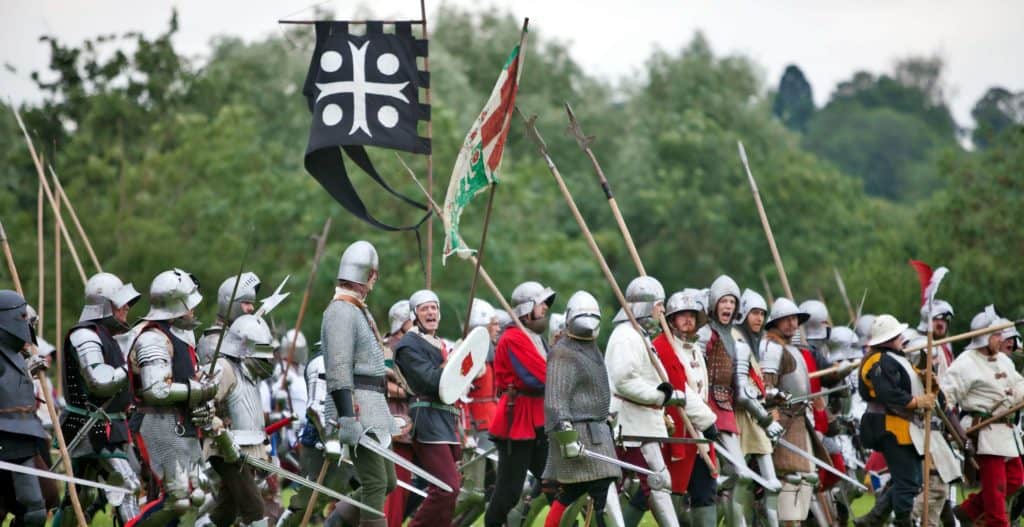Warwick ‘the Kingmaker’ was a nobleman, a military commander in the Wars of the Roses and an influential politician who would by stealth, cunning and daring be in virtual control of the country for many years until his death at the Battle of Barnet in April 1471.

He was born Richard Neville on 22nd November 1428, the eldest son of the 5th Earl of Salisbury. He later acquired the title 16th Earl of Warwick through his advantageous marriage to Lady Anne Beauchamp, Countess of Warwick, daughter of Richard Beauchamp, the 13th Earl of Warwick. This was a marriage that proved to be strategically powerful for Neville; a marriage involving not only a title, but also an inheritance of great fortune and land. In 1449 Richard Neville became jure uxoris (by right of his wife) Earl of Warwick.
However the newly titled Earl of Warwick soon found himself in conflict with the Duke of Somerset. The Duke had been granted control of Glamorgan, until then held by Warwick, by King Henry VI. King Henry then fell ill and Somerset, a favourite of the king, virtually took control of government. For this reason Warwick decided to support Richard Duke of York’s bid to oust the incapacitated king.

The Duke of York was married to Warwick’s aunt, Cecily Neville, and the subsequent struggle for royal control became a personal matter for Warwick who would fight alongside his father in numerous battles against the king. These battles became known as the Wars of the Roses, a pivotal historical conflict fought between two rival branches of the royal family, the House of Lancaster (red rose) and the House of York (white rose).
In 1455 the First Battle of St Albans resulted in a Yorkist victory, the death of Warwick’s rival Somerset and the capture of the king. This did not however lead to the Duke of York gaining power as he would have hoped. Warwick remained one of his most loyal allies and as a reward for this support, Warwick received the prestigious position of Captain of Calais.

Warwick’s strong position did not go unnoticed by Queen Margaret who viewed him as a very real threat to the throne. He was very politically astute and used his time in Calais to form good diplomatic relationships. He was cultivating an impressive persona as a man of sound military might with contacts across Europe. He would later return to England with members of his garrison to meet up with his father and the Duke of York.
Unfortunately for York, Warwick and Salisbury, in battle their men proved less willing to fight against the king than they had first thought. In an effort to regroup after defeat at Ludlow, the three men went their separate ways, buying themselves time to come up with another plan of attack.
A year later in July 1460, the Yorkist forces were victorious at the Battle of Northampton. King Henry VI was captured, a decisive turning point in the war.
The Duke of York entered parliament and in a shockingly provocative act, placed his hands on the throne, as if to say this seat is mine.
The onlookers to this scene were outraged and the subsequent agreement called the Act of Accord decreed that York would only inherit the throne after Henry VI had died. This did not satisfy either party and inevitably, the war raged on.
The Battle of Wakefield was for Warwick the Kingmaker a personally significant battle. Margaret of Anjou, the Lancastrian queen had sent a large force of around 6,000 men, including the Duke of Somerset and Lord Clifford, to attack the Yorkist forces at Sandal Castle.
They had been enjoying Christmas festivities, which would soon end in bloodshed. The battle saw York lead his men down from the safety of the castle straight into a trap in which the Duke of York was killed. Meanwhile, his son Edmund, Earl of Rutland also lost his life whilst making an attempt to flee.
Warwick tragically suffered the loss of his father, Salisbury, who had been captured and subsequently executed, along with his younger brother Thomas. In a macabre show of victory, the severed heads of the Duke of York and Earl of Salisbury were then paraded around.
Further defeat on 17th February 1461 at the Second Battle of St Albans led to Yorkist retreat, leaving behind King Henry VI who is said to have spent the battle sitting under a tree, singing.
Warwick’s response as “kingmaker” was to travel to London as quickly as possible in order to announce that Richard’s son Edward would be king. All that was needed was to decisively defeat the Lancastrian forces of King Henry VI.

The Battle of Towton proved to be one of the largest and bloodiest struggles of the war. The queen fled to Scotland along with King Henry VI. The Yorkist forces proclaimed victory and Edward headed for London as royal victor. In June 1461 he was crowned King Edward IV of England at Westminster Abbey.
Meanwhile, what did this mean for Warwick? For the first couple of years of Edward IV’s reign, Warwick assumed the role of virtual ruler. He was in the strongest position he had ever held. Not only did he continue to serve as Captain of Calais but he was given the position of High Admiral of England and Steward of the Duchy of Lancaster.
The positions he held were numerous, filing many important administrative roles, a right-hand man of the king so to speak. Not only that, but he had inherited a personal fortune after the death of his father and in 1462, he also inherited his mother’s land and the Salisbury title.
Victory had never tasted so sweet for the Earl of Warwick. He was amassing a great personal fortune as well as holding enormous power in various administrative and political positions, whilst also serving as a military leader, winning favour and popularity for his naval victories off the coast of Calais.

Unfortunately, the good relationship between Edward IV and Warwick quickly soured when Edward secretly married Elizabeth Woodville whilst Warwick had been negotiating his marriage to Bona of Savoy. The fact that Elizabeth was also the widow of a Lancastrian knight drove a wedge between Edward and Warwick that could not be reconciled.
The seeds of discontent continued to be sewn as Warwick appeared less and less in court. To add insult to injury, the king began to favour his father-in-law, Richard Woodville, Earl Rivers, especially when he supported a Burgundian alliance which was in direct opposition to Warwick. This was the final straw for Warwick who saw his political power dwindling in favour of Elizabeth’s father.
Warwick’s desire to have his daughter Isabel Neville marry George, Edward’s brother, was thwarted by the king who disagreed with the union. In defiance of the king, the two married in Calais, thus cementing the disloyalty and division. Warwick turned his back on Edward IV and instead turned his attentions towards the House of Lancaster.
A rebellion broke out, instigated by Warwick, that would see the death of Richard Woodville, Elizabeth’s father and one of Warwick’s main rivals. In retaliation for the betrayal he felt by King Edward IV, he took Woodville and his sons and beheaded them at Kenilworth.
Meanwhile, Edward IV had been captured during the battle and subsequently thrown into prison at Warwick Castle. The imprisonment however did not have the full backing of the elite and by 1470 Edward was released and Warwick exiled.
In one final attempt to restore his political power, Warwick sought an alliance with the Lancastrians, a bold move for someone who had fought so fervently against them during the Wars of the Roses. In 1470 Warwick returned for his swansong. He reinstated Henry VI as a puppet king, ruling through him.

His ultimate defeat came at the Battle of Barnet, a clash which saw the “kingmaker” lose his life. His struggle for power had finally come to an end.
The Earl of Warwick had exerted his power and political will across the country, winning popularity as well as enemies. His epithet “Kingmaker” is a powerful reminder of his impact on fifteenth century English monarchy, society and politics.
Jessica Brain is a freelance writer specialising in history. Based in Kent and a lover of all things historical.






